2012
Abbas Amanat
 Is There A Middle East?: The Evolution of a Geopolitical Concept (Stanford University Press, 2012)
Is There A Middle East?: The Evolution of a Geopolitical Concept (Stanford University Press, 2012)
Is the idea of the “Middle East” simply a geopolitical construct conceived by the West to serve particular strategic and economic interests—or can we identify geographical, historical, cultural, and political patterns to indicate some sort of internal coherence to this label? While the term has achieved common usage, no one studying the region has yet addressed whether this conceptualization has real meaning—and then articulated what and where the Middle East is, or is not.
This volume fills the void, offering a diverse set of voices—from political and cultural historians, to social scientists, geographers, and political economists—to debate the possible manifestations and meanings of the Middle East. At a time when geopolitical forces, social currents, and environmental concerns have brought attention to the region, this volume examines the very definition and geographic and cultural boundaries of the Middle East in an unprecedented way. (Edited by Michael E. Bonine, Abbas Amanat, and Michael Ezekiel Gasper)
more …
 Iran Facing Others: Identity Boundaries in a Historical Perspective (Palgrave MacMillan, 2012)
Iran Facing Others: Identity Boundaries in a Historical Perspective (Palgrave MacMillan, 2012)
This collection of essays is about Iranian identity in its various manifestations as it encountered the challenge of modernity. It problematizes the notion of an all-inclusive and universal “Iranian-ness” while considering the place of collective memory and sense of community. It consists of five parts organized along thematic lines. The first part, “The Legacy of Cultural Exclusion,” deals with the medieval and early modern attempts to define notions of Iran and ‘ajam and its supposed others - aniran, Turco-Mongols, and South Asians - through the Persian medieval epic, the Shahnamah, Persian literary histories and tazkirahs. The second part, “The Internal Frontiers,” deals with the question of identity at the frontiers of Iran, including nineteenth century travel narratives in Khurasan, Azerbaijani regional re-readings of the significance of Babak Khorramdin, and Qashqa’i attitudes towards the “Iranian” state. The third part, “Empires and Encounters,” examines the nature of Iranian interactions with Empires - Russian, British and Ottoman - in the nineteenth and twentieth centuries, with an emphasis of political and cultural “othering”. The fourth part, “Identity and Iranian Political Cultures,” discusses the Iranian intellectual engagement with Orientalism and the shaping of Iranian understandings of self and other in the twentieth century. Part five, “Globalized anxieties,” expands on the theme of Iranian cultural anxieties - both domestically and internationally - and how the modern Iranian state (including the Islamic Republic) copes with the challenges of globalization, the treatment of its own minorities, and imagined domestic enemies. Finally, it addresses how Iranian diaspora communities negotiate their identities abroad, particularly in the United States. (Edited by Abbas Amanat and Farzin Vejdani)
more …
Joel Baden
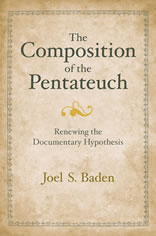 The Composition of the Pentateuch: Renewing the Documentary Hypothesis (Yale University Press, 2012)
The Composition of the Pentateuch: Renewing the Documentary Hypothesis (Yale University Press, 2012)
For well over two centuries the question of the composition of the Pentateuch has been among the most central and hotly debated issues in the field of biblical studies. In this book, Joel Baden presents a fresh and comprehensive argument for the Documentary Hypothesis. Critically engaging both older and more recent scholarship, he fundamentally revises and reorients the classical model of the formation of the Pentateuch. Interweaving historical and methodological chapters with detailed textual case studies, Baden provides a critical introduction to the history of Pentateuchal scholarship, discussions on the most pressing issues in the current debate, and a practical model for the study of the biblical text.
more …
Marcia Inhorn
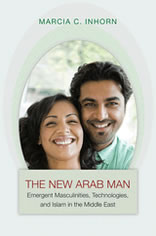 The New Arab Man: Emergent Masculinities, Technologies, and Islam in the Middle East (Princeton University Press, 2012)
The New Arab Man: Emergent Masculinities, Technologies, and Islam in the Middle East (Princeton University Press, 2012)
Middle Eastern Muslim men have been widely vilified as terrorists, religious zealots, and brutal oppressors of women. The New Arab Man challenges these stereotypes with the stories of ordinary Middle Eastern men as they struggle to overcome infertility and childlessness through assisted reproduction.
Drawing on two decades of ethnographic research across the Middle East with hundreds of men from a variety of social and religious backgrounds, Marcia Inhorn shows how the new Arab man is self-consciously rethinking the patriarchal masculinity of his forefathers and unseating received wisdoms. This is especially true in childless Middle Eastern marriages where, contrary to popular belief, infertility is more common among men than women. Inhorn captures the marital, moral, and material commitments of couples undergoing assisted reproduction, revealing how new technologies are transforming their lives and religious sensibilities. And she looks at the changing manhood of husbands who undertake transnational “egg quests”–set against the backdrop of war and economic uncertainty–out of devotion to the infertile wives they love.
Trenchant and emotionally gripping, The New Arab Man traces the emergence of new masculinities in the Middle East in the era of biotechnology.
more …
2011
Aaron M. Butts
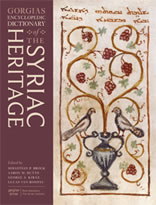 The Gorgias Encyclopedic Dictionary of the Syriac Heritage (Gorgias Press, 2011)
The Gorgias Encyclopedic Dictionary of the Syriac Heritage (Gorgias Press, 2011)
The Gorgias Encyclopedic Dictionary of the Syriac Heritage (GEDSH) is the first major encyclopedia-type reference work devoted exclusively to Syriac Christianity, both as a field of scholarly inquiry and as the inheritance of Syriac Christians today. In more than 600 entries it covers the Syriac heritage from its beginnings in the first centuries of the Common Era up to the present day. Special attention is given to authors, literary works, scholars, and locations that are associated with the Classical Syriac tradition. Within this tradition, the diversity of Syriac Christianity is highlighted as well as Syriac Christianity’s broader literary and historical contexts, with major entries devoted to Greek and Arabic authors and more general themes, such as Syriac Christianity’s contacts with Judaism and Islam, and with Armenian, Coptic, Ethiopian, and Georgian Christianities. In addition to the literary tradition, inscriptions and objects of art are given due consideration. The entries are accompanied by 131 illustrations, twenty of which are in color. The volume closes with maps, lists of patriarchs of the main Syriac Churches of the Middle East, and elaborate indices.
GEDSH is a collaborative project that involves seventy-six scholars from across the globe. Three of the four editors are associated with major universities in Europe and the United States: Oxford University, Yale University, and Duke University. The fourth editor is the founding director of Beth Mardutho: The Syriac Institute. GEDSH was carried out under the auspices of Beth Mardutho.
more …
Steven D. Fraade
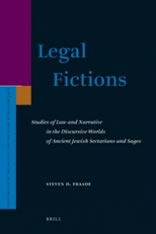 Legal Fictions: Studies of Law and Narrative in the Discursive Worlds of Ancient Jewish Sectarians and Sages (Brill, 2011)
Legal Fictions: Studies of Law and Narrative in the Discursive Worlds of Ancient Jewish Sectarians and Sages (Brill, 2011)
Ancient Jewish writings combine interpretive narratives of Israel’s sacred history with legal prescriptions for a divinely ordered way of life. Two ancient Jewish societies have left us extensive textual corpora preserving interpenetrating legal and narrative interpretive teachings: the sectarian community of the Dead Sea Scrolls and the sage-disciple circles of the early Rabbis. This book comprises studies that explore specific aspects of the interplay of interpretative, narrative, and legal rhetoric with an eye to pedagogic function and social formation for each of these communities and for both of them in comparison. It addresses questions of how best to approach these writings for purposes of historical retrieval and reconstruction by recognizing the inseparability of literary-rhetorical textual analysis and a non-reductive historiography.
more …
Eckart Frahm
 Babylonian and Assyrian Text Commentaries (Ugarit Verlag, Münster, 2011)
Babylonian and Assyrian Text Commentaries (Ugarit Verlag, Münster, 2011)
The systematic study of written texts began not in biblical Israel or the classical world but in ancient Mesopotamia. Nearly 1,000 clay tablets from Babylonia and Assyria, dating from the eighth to the second century b.c.e., comprise the earliest substantial corpus of text commentaries known from anywhere in the world. Texts commented on by Mesopotamian scholars include literary works, rituals and incantations, medical treatises, lexical lists, laws, and, most importantly, omen texts. This book provides the first comprehensive study of the challenging and so far little-studied Babylonian and Assyrian text commentaries. Topics discussed include the place of commentaries in the Mesopotamian philological tradition, cuneiform commentary types, hermeneutic techniques used by the ancient scholars, the sources of their explanations, the sociocultural milieu of Mesopotamian commentary studies, canonization and the formation of the commentary tradition, the reception history of the Babylonian Epic of Creation, and the legacy of Babylonian and Assyrian hermeneutics. A complete catalog of the commentaries and full editions of two typical examples complete the study, which is accompanied by a bibliography and ample indexes.
Eckart Frahm
 Neo-Babylonian Letters and Contracts from the Eanna Archive (Yale University Press, 2011)
Neo-Babylonian Letters and Contracts from the Eanna Archive (Yale University Press, 2011)
The volume presents facsimile copies of over two hundred previously unpublished Babylonian letters and documents written in cuneiform script. The texts, dating from the sixth century BCE, mainly originate from the archives of the Eanna temple in Uruk in southern Mesopotamia, and they contribute important information relating to the political, social, and economic history of this period.
In a detailed introduction the authors discuss the significance of these texts and explore their historical and socioeconomic implications. The volume also includes summaries of the contents of the individual documents and comprehensive indices to facilitate full access to the primary data for students and scholars. (Eckart Frahm and Michael Jursa)
more …
Charles Hill
 Trial of a Thousand Years: World Order and Islamism (Hoover Press, 2011)
Trial of a Thousand Years: World Order and Islamism (Hoover Press, 2011)
“A Muslim has no nationality except his religious beliefs,” said Egyptian Sayyid Qutb, a key figure in the world of political Islam who was executed by the secular regime in his homeland in 1966. For decades, the ideologues of pan-Islam have refused to accept the boundaries and the responsibilities of the order of states. In Trial of a Thousand Years, Charles Hill analyzes the long war of Islamism against the international state system. Hill places the Islamists in their proper historical place, showing that they are but the latest challenge to the requirements that states had placed on themselves since the international system was born in 1648.
The author describes the many wars on world order over the modern centuries—the French Revolution and Napoleonic Wars, World Wars I and II, the cold war—and gives a unique historical perspective to the Islamic challenge of the twenty-first century in Iran, Afghanistan, and beyond. He concludes that America must not give up its values; neither should we retreat by declaring that we will practice them only at home or by telling ourselves that our values are no more worthy than any others selected at random from among the world’s many cultures. The first step, he says, is to recognize the problem and then try to develop ways to deal with the exploitation of asymmetries by the enemies of world order.
more …
Susan B. Matheson
 Corpus Vasorum Antiquorum, Yale University Art Gallery, New Haven, Connecticut, Fascicule 1 (U.S.A. Fascicule 38): Red-Figure and White Ground Vases (Verlag Philipp von Zabern, 2011)
Corpus Vasorum Antiquorum, Yale University Art Gallery, New Haven, Connecticut, Fascicule 1 (U.S.A. Fascicule 38): Red-Figure and White Ground Vases (Verlag Philipp von Zabern, 2011)
more …
Robert Nelson
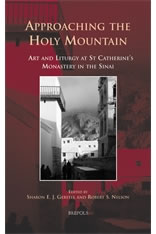 Approaching the Holy Mountain: Art and Liturgy at St. Catherine’s Monastery in the Sinai (Brepols, 2011)
Approaching the Holy Mountain: Art and Liturgy at St. Catherine’s Monastery in the Sinai (Brepols, 2011)
Nineteen studies of celebrated Byzantine icons at the longest continuously inhabited Christian monastery in the world.
The first comprehensive study of the monastery of St Catherine at Mt Sinai in its full historical, art historical, and religious dimensions, the nineteen collected essays in Approaching the Holy Mountain provide a unique view of the longest continuously inhabited Christian monastery. As an important pilgrimage site, Sinai enjoyed an international reputation in the Middle Ages. The monastery also benefited from regional connections to Egypt and the Holy Land. The essays in this volume examine the pilgrims, monks, artists, builders, and scholars who came to the mountain and left their marks on the monastery and its holdings, as well as the image of the monastery that was promoted outside of Sinai.
Because of its dry, isolated location in the Sinai desert, the monastery possesses the world’s greatest collection of Byzantine icons. These icons have been celebrated in highly popular exhibitions in Athens, London, St Petersburg, New York, and Los Angeles, few longer studies of the icons have been attempted. In this volume authors investigate icons from the sixth to the sixteenth centuries and offer new interpretations of their meaning, provenance, and function. Essays also explore celebrated illuminated Byzantine manuscripts in the library of St Catherine’s, pilgrim’s accounts of the monastery, a recently excavated early church on the summit of Mt Sinai, liturgy at Sinai during the first Christian millennium, the influence of Sinai on later paintings and engravings, and the recent history of Sinai studies. The result is a significant advance in our understanding of one of the most important centres of early Christianity. (Robert Nelson and Sharon Gerstel)
Alan Mikhail
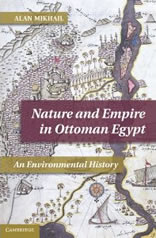 Nature and Empire in Ottoman Egypt (Cambridge, 2011)
Nature and Empire in Ottoman Egypt (Cambridge, 2011)
In one of the first ever environmental histories of the Ottoman Empire, Alan Mikhail examines relations between the empire and its most lucrative province of Egypt. Based on both the local records of various towns and villages in rural Egypt and the imperial orders of the Ottoman state, this book charts how changes in the control of natural resources fundamentally altered the nature of Ottoman imperial sovereignty in Egypt and throughout the empire. In revealing how Egyptian peasants were able to use their knowledge and experience of local environments to force the hand of the imperial state, Nature and Empire in Ottoman Egypt tells a story of the connections of empire stretching from canals in the Egyptian countryside to the palace in Istanbul, from the Anatolian forest to the shores of the Red Sea, and from a plague flea’s bite to the fortunes of one of the most powerful states of the early modern world.
Alan Mikhail has been awarded the Samuel & Ronnie Heyman Prize for Outstanding Scholarly Publication by Yale and has been named the inaugural recipient of the Roger Owen Book Award for a work in economic history by the Middle East Studies Association for his monograph, “Nature and Empire in Ottoman Egypt.”
Muhammad Ali Aziz
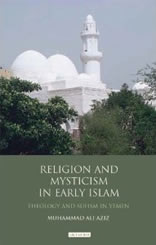 Religion and Mysticism in Early Islam: Theology and Sufism in Yemen (I.B.Taurus, 2011)
Religion and Mysticism in Early Islam: Theology and Sufism in Yemen (I.B.Taurus, 2011)
Scholar, mystic and visionary, Ibn ‘Alwan lived through the transition from Ayyubid to Rasulid rule in thirteenth-century Yemen. He was well known in his time for his critique of the ruling elites and their governance, and left behind a substantial body of writings on Islamic mysticism, theology, law and exegesis of the Qur’an. Here Muhammad Aziz presents a comprehensive portrait of Ibn ‘Alwan, delineating the religious and political background in Yemen, the development of Sufi orders, the interplay between Sufi, Shi’i and Sunni traditions, and the impact of Ibn ‘Alwan on the history of Sufism and Islam. The first study of Ibn ‘Alwan in English, “Religion and Mysticism in Early Islam” is essential reading for all those interested in mysticism, early Islam, Sufism, and religion and history more generally.
Kishwar Rizvi
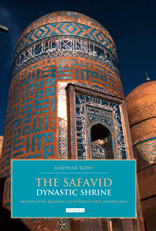 The Safavid Dynastic Shrine: Architecture, Religion and Power in Early Modern Iran (I.B. Taurus, 2011)
The Safavid Dynastic Shrine: Architecture, Religion and Power in Early Modern Iran (I.B. Taurus, 2011)
The Safavid period represents an immensely rich chapter in the history of Iranian architecture. In this discussion of Safavid architecture in the context of its political, social and religious milieu, Kishwar Rizvi gives special consideration to the shrine of Shaykh Safi, built in AD 1334, as an important template for an emergent Safavid taste. Of both regal and religious significance, the shrine’s direct relationship to imperial power is unique in Islamic architecture and provides valuable information about the methods of architectural benefaction prevalent in early modern Iran. Rizvi examines the ways in which the transition from a devotional aesthetic to an imperial one represented the young dynasty’s imperial aspirations, and affected a wide range of public buildings from mosques to palaces during the early Safavid period and beyond.
2010
Dimitri Gutas
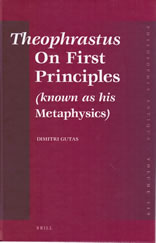 Theophrastus On First Principles (known as his Metaphysics)
Theophrastus On First Principles (known as his Metaphysics)
[Philosophia Antiqua 119] (Brill, 2010)
The short aporetic essay On First Principles by Theophrastus, thought to have been transmitted as his Metaphysics, is critically edited for the first time on the basis of all the available evidence–the Greek manuscripts and the medieval Arabic and Latin translations—together with an introduction, English translation, extensive commentary, and a diplomatic edition of the medieval Latin translation. This book equally contributes to Graeco-Arabic studies as ancilla of classical studies, and includes the first critical edition of the Arabic translation with an English translation and commentary, a detailed excursus on the editorial technique for Greek texts whose medieval Arabic translations are extant as well as for the Arabic translations themselves, and a complete Greek and Arabic glossary as a blueprint for future lexica.
Frank Griffel
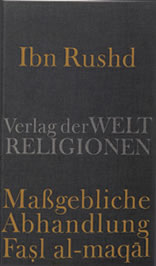 Ibn Rushd: Maßgebliche Abhandlung. Fasl al-Maqal
Ibn Rushd: Maßgebliche Abhandlung. Fasl al-Maqal
(Verlag der Weltreligionen, 2010)
The Muslim philosopher Ibn Rushd (d. 1198) became famous among Latin European scholars as a commentator of the works of Aristotle. In Europe he was known as Averroes or simple as commentarius, “the commentator.” Active under the Almohads in Muslim Seville, Cordoba, and Marrakech, his various sets of commentaries on Aristotle were translated into Latin and Hebrew and widely read until the 16th century. In Islam, however, his influence was very limited until the 19th century when three of his works on the harmonization of religion and philosophy were discovered in a Spanish manuscript library. Ibn Rushd wrote these three works in his capacity as a Muslim legal scholar (faqih) and an Almohad theologian. In these works he expresses the view that best theology of Islam is the philosophy of Aristotle.
This volume offers a German translation of two of Ibn Rushd’s work on Islamic theology: his Decisive Treatise on the Kind of Connection Between the Religious Law and Philosophy (Fasl al-maqal)and the so-called Appendix on Divine Knowledge (al-Damima). The translations come with extensive notes and explanations as well as an introduction on Ibn Rushd’s life, his position as a scholar of the Almohad movement, and the influence of his Decisive Treatise on debates within modern Islam.
Christine Hayes
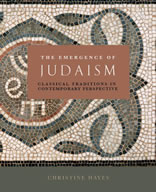 The Emergence of Judaism: Classical Traditions in Contemporary Perspective (Fortress Press, 2010)
The Emergence of Judaism: Classical Traditions in Contemporary Perspective (Fortress Press, 2010)
This brief survey text tells the story of Judaism. Through the lens of modern biblical scholarship, Christine Hayes explores the shifting cultural contexts–the Babylonian exile, the Roman Empire, the Byzantine period, the rise of Christianity–that affected Jewish thought and practice, and laid the groundwork for the Talmudic era and its modern legacy.
Adria Lawrence
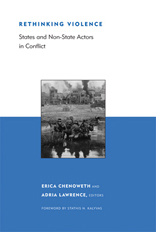 Rethinking Violence: States and Non-State Actors in Conflict
Rethinking Violence: States and Non-State Actors in Conflict
(MIT Press, 2010)
States, nationalist movements, and ethnic groups in conflict face a choice between violent and nonviolent strategies. Although major wars between sovereign states have become rare, contemporary world politics has been rife with internal conflict, ethnic cleansing, and violence against civilians. This book asks how, why, and when states and non-state actors use violence against one another, and examines the effectiveness of various forms of political violence.
Ellen Lust
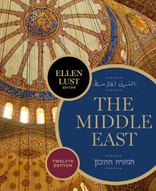 The Middle East
The Middle East
(CQ Press, 2010)
States, nationalist movements, and ethnic groups in conflict face a choice between violent and nonviolent strategies. Although major wars between sovereign states have become rare, contemporary world politics has been rife with internal conflict, ethnic cleansing, and violence against civilians. This book asks how, why, and when states and non-state actors use violence against one another, and examines the effectiveness of various forms of political violence.
Robert S. Nelson
 The Old Testament in Byzantium (Dumbarton Oaks Byzantine Symposia
The Old Testament in Byzantium (Dumbarton Oaks Byzantine Symposia
and Colloquia) (Harvard University Press, 2010)
This volume contains selected papers from a December 2006 Dumbarton Oaks symposium that complemented an exhibition of early Bible manuscripts at the Freer Gallery and Sackler Gallery of Art titled “In the Beginning: Bibles before the Year 1000.”
Carolyn J. Sharp
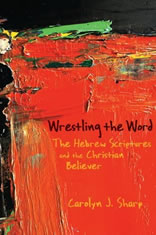 Wrestling the Word: The Hebrew Scriptures and the Christian Believer
Wrestling the Word: The Hebrew Scriptures and the Christian Believer
(Westminster John Knox Press, 2010)
This book for introductory Old Testament classes offers an appealing illustration of how faith and academic study can work together, motivating and equipping Christian believers to turn to the Old Testament as a profound resource for their daily negotiations of faith, identity, and culture. Throughout, Sharp focuses on the basic fundamentals that are a necessary part of every student’s education.
2009
Abbas Amanat
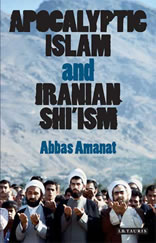 Apocalyptic Islam and Iranian Shi’ism
Apocalyptic Islam and Iranian Shi’ism
(I.B. Tauris, 2009)
Interest in Shi’i Islam is running at unprecedented levels. International tensions over Iran, where the largest number of Shi’i Muslims live, as well as the political resurgence of the Shi’i in Iraq and Lebanon, have created an urgent need to understand the background, beliefs and motivations of this dynamic vision of Islam.
Joel S. Baden
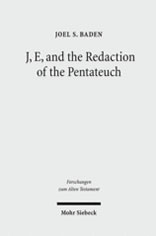 J, E, and the Redaction of the Pentateuch
J, E, and the Redaction of the Pentateuch
(Mohr Siebeck, 2009)
Joel S. Baden addresses the relationship between the J and E documents in the Pentateuch. He demonstrates that, contrary to the standard claims of classical source criticism, the J and E sources were never combined into a “JE” document. Rather, these two sources were combined with each other at the same time that they were combined with the P and D documents, in one process of redaction.
Aaron M. Butts
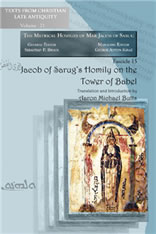 Jacob of Sarug’s Homily on the Tower of Babel
Jacob of Sarug’s Homily on the Tower of Babel
(Gorgias Press, 2009)
A bilingual Syriac-English edition of a metrical homily on the Tower of Babel by the Syriac author Jacob of Sarug (d. 521).
Benjamin R. Foster, Karen Polinger Foster
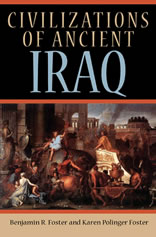 Civilizations of Ancient Iraq
Civilizations of Ancient Iraq
(Princeton University Press, 2009)
In Civilizations of Ancient Iraq, Benjamin and Karen Foster tell the fascinating story of ancient Mesopotamia from the earliest settlements ten thousand years ago to the Arab conquest in the seventh century. Winner of the Felicia A. Holton Book Award 2010, Archaeological Institute of America
Eckart Frahm
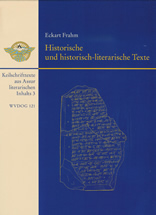 Keilschrifttexte aus Assur literarischen Inhalts III: Historische und historisch-literarische Texte
Keilschrifttexte aus Assur literarischen Inhalts III: Historische und historisch-literarische Texte
(Harrassowitz, 2009)
Contains handcopies and editions of 80 previously unpublished historical and historical-literary texts in cuneiform from the city of Assur (Iraq). The texts, written between the 13th and the 7th century BCE, include the earliest Assyrian royal inscription that mentions Egypt, a new letter to the god Assur, a chronicle from the reign of Assurnasirpal I, new fragments of vassal treaties of the Assyrian kings Sennacherib and Esarhaddon, and a fictional dialogue between Ishme-Dagan, an early Assyrian king, and the god Enlil-Assur.
Frank Griffel
 Al-Ghazali’s Philosophical Theology
Al-Ghazali’s Philosophical Theology
(Oxford University Press, 2009)
The Muslim thinker al-Ghazali (d. 1111) was one of the most influential theologians and philosophers of Islam and has been considered an authority in both Western and Islamic philosophical traditions. Born in northeastern Iran, he held the most prestigious academic post in Islamic theology in Baghdad, only to renounce the position and teach at small schools in the provinces for no money. His contributions to Islamic scholarship range from responding to the challenges of Aristotelian philosophy to creating a new type of Islamic mysticism and integrating both these traditions-falsafa and Sufism-into the Sunni mainstream.
Marcia C. Inhorn
 Assisting Reproduction, Testing Genes: Global Encounters with the New Biotechnologies
Assisting Reproduction, Testing Genes: Global Encounters with the New Biotechnologies
(Berghahn Books, 2009) (with Daphna Birenbaum-Carmeli)
Following the routinization of assisted reproduction in the industrialized world, technologies such as in vitro fertilization, preimplantation genetic diagnosis, and DNA-based paternity testing have traveled globally and are now being offered to couples in numerous non-Western countries. This volume explores the application and impact of these advanced reproductive and genetic technologies in societies across the globe.
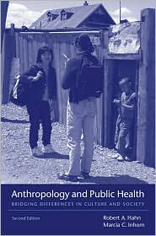 Anthropology and Public Health: Bridging Differences in Culture and Society
Anthropology and Public Health: Bridging Differences in Culture and Society
(Oxford University Press, 2009)
Many serious public health problems confront the world in the new millennium. Anthropology and Public Health examines the critical role of anthropology in four crucial public health domains: (1) anthropological understandings of public health problems such as malaria, HIV/AIDS, and diabetes; (2) anthropological design of public health interventions in areas such as tobacco control and elder care; (3) anthropological evaluations of public health initiatives such as Safe Motherhood and polio eradication; and (4) anthropological critiques of public health policies, including neoliberal health care reforms. As the volume demonstrates, anthropologists provide crucial understandings of public health problems from the perspectives of the populations in which the problems occur. On the basis of such understandings, anthropologists may develop and implement interventions to address particular public health problems, often working in collaboration with local participants. Anthropologists also work as evaluators, examining the activities of public health institutions and the successes and failures of public health programs. Anthropological critiques may focus on major international public health agencies and their workings, as well as public health responses to the threats of infectious disease and other disasters.
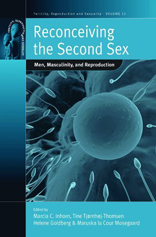 Reconceiving the Second Sex: Men, Masculinity, and Reproduction
Reconceiving the Second Sex: Men, Masculinity, and Reproduction
(Berghahn Books, 2009)
Extensive social science research, particularly by anthropologists, has explored women’s reproductive lives, their use of reproductive technologies, and their experiences as mothers and nurturers of children. Meanwhile, few if any volumes have explored men’s reproductive concerns or contributions to women’s reproductive health: Men are clearly viewed as the second sexA in reproduction. This volume argues that the marginalization of men is an oversight of considerable proportions. It sheds new light on male reproduction from a cross-cultural, global perspective, focusing not only upon men in Europe and America but also those in the Middle East, Asia, and Latin America. Both heterosexual and homosexual, married and unmarried men are featured in this volume, which assesses concerns ranging from masculinity and sexuality to childbirth and fatherhood.
Andrew F. March
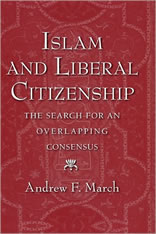 Islam and Liberal Citizenship: The Search for an Overlapping Consensus
Islam and Liberal Citizenship: The Search for an Overlapping Consensus
(Oxford University Press, 2009)
Some argue that Muslims have no tradition of separation of church and state and therefore can’t participate in secular, pluralist society. At the other extreme, some Muslims argue that it is the duty of all believers to resist western forms of government and to impose Islamic law. Andrew F. March demonstrates that there are very strong and authentically Islamic arguments for accepting the demands of citizenship in a liberal democracy, many of them found even in medieval works of Islamic jurisprudence. In fact, he shows, it is precisely the fact that Rawlsian political liberalism makes no claims to metaphysical truth that makes it appealing to Muslims.
Dina Roginsky
 Dance Discourse in Israel
Dance Discourse in Israel
(Resling Press, 2009)
Dance Discourse in Israel introduces a collection of articles in the field of dance research in Israel. A key issue of the book is the search for a unique expression of local Israeli creation within the universal language of dance.
Maurice Samuels
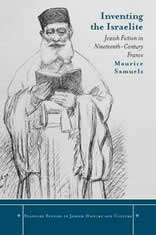 Inventing the Israelite: Jewish Fiction in Nineteenth-Century France
Inventing the Israelite: Jewish Fiction in Nineteenth-Century France
(Stanford University Press, 2009)
In this book, Maurice Samuels brings to light little known works of literature produced from 1830 to 1870 by the first generation of Jews born as French citizens. The book won the Aldo and Jeanne Scaglione Prize given by the Modern Language Association for the best book in French Studies in 2009.
Carolyn J. Sharp
 Irony and Meaning in the Hebrew Bible
Irony and Meaning in the Hebrew Bible
(Indiana University Press, 2009)
Was God being ironic in commanding Eve not to eat fruit from the tree of wisdom? Carolyn J. Sharp suggests that many stories in the Hebrew Scriptures may be ironically intended. Deftly interweaving literary theory and exegesis, Sharp illumines the power of the unspoken in a wide variety of texts from the Pentateuch, the Prophets, and the Writings.
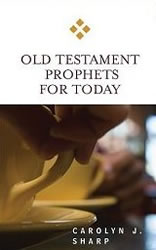 Old Testament Prophets for Today
Old Testament Prophets for Today
(Westminster John Knox Press, 2009)
Carolyn Sharp offers a brief introduction to each of the Bible s prophets and their prophetic books, developing the theological themes present in each with an eye toward how the prophetic message is relevant today. Sharp understands that prophets can be mediators to connect us with the holiness of God, idealists whose desires for humanity call us to new heights of God’s desire, and companions for us in the confusing journey through our complicated world. The book contains study questions for group or individual use.
